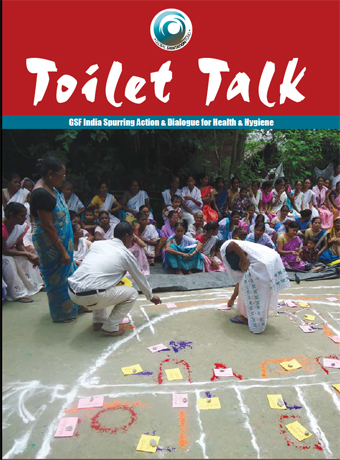Navigation
WSSCC Progresses in Meeting Sanitation and Hygiene Needs
This is the third article of a series on “Realizing Water, Sanitation and Hygiene for All.” It features the Water Supply and Sanitation Collaborative Council's (WSSCC) progress in meeting sanitation and hygiene needs with the help of the communities themselves and assistance from the WSSCC managed Global Sanitation Fund.
This is the third article of a series on
“Realizing Water, Sanitation and Hygiene for All”
The first focuses on the background of the problem, what it means for nearly half the people of the developing world who lack adequate water, sanitation and hygiene.
The second focuses on Singapore’s NEWater which comes from collected and cleaned wastewater.
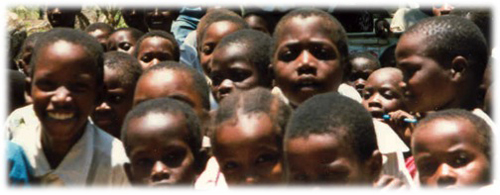 Happy children: Photograph by Jay Graham
Happy children: Photograph by Jay Graham
“…once we can secure access to clean water and to adequate sanitation facilities
for all people, irrespective of the difference in their living conditions,
a huge battle against all kinds of diseases will be won,”
Said the late Dr. Lee when he was Director-General of the World Health Organization.
This article features the Water Supply and Sanitation Collaborative Council's (WSSCC) progress in meeting sanitation and hygiene needs with the help of the communities themselves and assistance from the WSSCC managed Global Sanitation Fund.
The Water Supply and Sanitation Collaborative Council's vision is of a world where everybody has sustained water supply, sanitation and hygiene. The WSSCC works with partners and its membership to save lives and improve livelihoods by enhancing collaboration among sector agencies and professionals who are working to improve access for the 2.5 billion people without safe sanitation and the 783 million people without clean drinking water.
WSSCC says its work is contributing to the broader goals of “poverty eradication, health and environmental improvement, gender equality and long-term social and economic development.” The WSSCC has coalitions in more than 20 countries, members in more than 160 countries, and a Geneva-based Secretariat which is a unit of UNOPS (United Nations Office for Project Services). (Horizon International is among its members.)
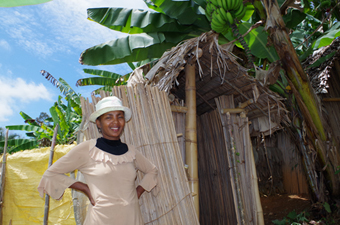 Marceline had her husband build the family’s first latrine in 2013. In this region in the East of: Madagascar more than 800 villages now have latrines for every household thanks to support from the Global Sanitation Fund program. Photograph©WSSCC/Katherine AndersonThe Global Sanitation Fund (GSF) is a multi-donor trust fund established by WSSCC to help large numbers of poor people to attain safe sanitation services and adopt good hygienic practices.
Marceline had her husband build the family’s first latrine in 2013. In this region in the East of: Madagascar more than 800 villages now have latrines for every household thanks to support from the Global Sanitation Fund program. Photograph©WSSCC/Katherine AndersonThe Global Sanitation Fund (GSF) is a multi-donor trust fund established by WSSCC to help large numbers of poor people to attain safe sanitation services and adopt good hygienic practices.
WSSCC states that it “considers the number of people living in open defecation free environments as an important intermediate step in people achieving improved sanitation.”
Thus, “the WSSCC supports GSF programs to measure a level of improved sanitation that breaks the fecal-oral route of risk of infection,” WSSCC states in the GSF mid-year progress update of August.
“Even a small number of people defecating in the open can be detrimental to the health of others in the community already using improved latrines. Health and other benefits of improved sanitation only truly accrue once 100 per cent access and usage is achieved, which is the ultimate aim of the GSF.
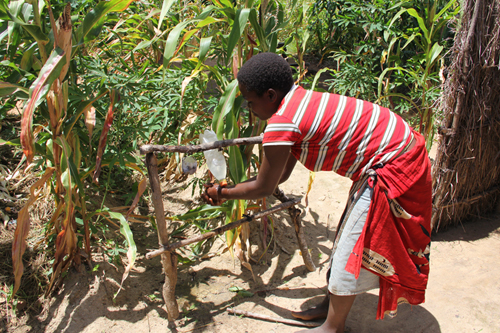 A young woman demonstrates good hand washing technique at a pump activated handwashing station: outside her toilet in Malawi. Globally more than 5.5 million people have heard about the importance of good hygiene through GSF supported community activities. Photograph ©WSSCC/Katherine Anderson
A young woman demonstrates good hand washing technique at a pump activated handwashing station: outside her toilet in Malawi. Globally more than 5.5 million people have heard about the importance of good hygiene through GSF supported community activities. Photograph ©WSSCC/Katherine Anderson
“People washing their hands with soap at critical times is a key indicator to measure an improvement in hygiene practice…some countries are reporting hand-washing results and there are early indications that increased handwashing is being demonstrated in many open defecation free (ODF) communities.”
Just how serious is the problem of lack of access to water, sanitation and hygiene? “Poor sanitation and hygiene are inextricably linked to water quality,” write Dr. Jens Aagaard-Hansen and Janine M. H. Selendy in the Introduction to the book, Water and Sanitation Related Diseases and the Environment: Challenges, Interventions and Preventive Measures. “About 2 million individuals, most of whom are less than five years old, die every year due to diarrheal diseases. More than 4,000 die every day. This equates to the death of one child every 15 seconds and exceeds the death rates from such killer diseases as malaria and tuberculosis. Infectious diarrhea kills more children than AIDS, malaria and, measles combined.”
In addition to diarrhea, malnutrition, Schistosomiasis, blindness from trachoma and many other illnesses are attributable to lack of adequate sanitation and hygiene.
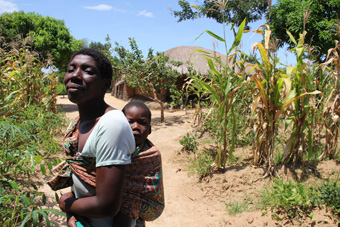 This mother and her child are among the 200,000 people in Malawi who live in a clean environment: thanks to the Global Sanitation Fund. Photograph©WSSCC/Katherine Anderson
This mother and her child are among the 200,000 people in Malawi who live in a clean environment: thanks to the Global Sanitation Fund. Photograph©WSSCC/Katherine Anderson
How well is the GFS progressing? As of 30 June 2013, the Global Sanitation Fund was actively supporting work in Cambodia, Ethiopia, India, Madagascar, Malawi, Nepal, Nigeria, Senegal, Tanzania and Uganda. “In those countries, more than 100 sub-grantees have raised awareness of sanitation and hygiene nationally and in a number of regions,” GSF reported.
“As a result of their work, around a million and a half people have access to and are using improved toilets, among other leading indicators of progress.”
Read the GSF 2013 Update available at: http://www.wsscc.org/sites/default/files/publications/gsf_progress_report_2013_0.pdf
WSSCC People's Stories - Diabou Aidara in Mbaké, Senegal
Diabou and her 10-year-old child used to have diarrhea, but after a triggering session, when the health team explained to everyone in the village about the campaign to end open-defecation, she spoke to her husband about getting a toilet of their own. They dug a pit and lined it with tires, Diabou cleans it daily and shows it off with pride. Her mother-in-law has a basic privy outside her home on the edge of the village. Still, it is covered and therefore fly-proof so it is better than going in the bush as she used to. A year ago, there were only four toilets in the whole village, now almost every house has a latrine, after 64 of them were built following a sensitization exercise, supported by the Global Sanitation Fund. In Senegal the GSF program has supported more than 111,000 people to live in open-defecation free environments, more than 240,000 people to wash their hands and more than 24,000 people to use improved latrines.
Diabou's story continues here.
On World Water Day 2014, WSSCC Reported, “Less diarrhea in Mbacké, Senegal, thanks to Global Sanitation Fund (GSF) and community participation.”
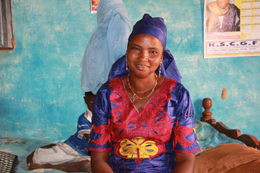 Diabou lives in a village which has latrines thanks to a program supported by GSF.: Photograph by Katherine Anderson/WSSCC.Diabou and her 10-year-old child used to have diarrhea, but after a triggering session, when the health team explained to everyone in the village about the campaign to end open-defecation, she spoke to her husband about getting a toilet of their own.
Diabou lives in a village which has latrines thanks to a program supported by GSF.: Photograph by Katherine Anderson/WSSCC.Diabou and her 10-year-old child used to have diarrhea, but after a triggering session, when the health team explained to everyone in the village about the campaign to end open-defecation, she spoke to her husband about getting a toilet of their own.
They dug a pit and lined it with tires. Diabou cleans it daily and shows it off with pride.
Her mother-in-law has a basic privy outside her home on the edge of the village. Still, it is covered and therefore fly-proof so it is better than going in the bush as she used to. A year ago, there were only four toilets in the whole village, now almost every house has a latrine, after 64 of them were built following a sensitization exercise, supported by the Global Sanitation Fund.
Initially villagers thought installing latrines and hand washing stations would be too expensive, but they were looking at the ‘top of the line’ improved latrines.
Diabou’s brother the village Imam has an improved latrine with walls and a ceiling. An improved latrine costs around $100 (US dollars). It is a source of real pride. Diabou and her husband have a basic latrine with a cement cover but no roof.
All the family’s latrines have hand-washing stations.
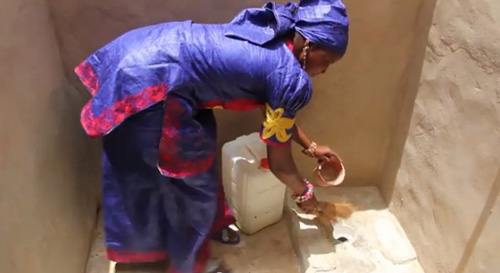 Diabou cleans the latrine her husband built for the family.: Photograph©WSSCC/Katherine Anderson
Diabou cleans the latrine her husband built for the family.: Photograph©WSSCC/Katherine Anderson
The cost of villagers installing their own basic latrine is on average CFA 1,000 ($20). The latrine lasts two to five years, and so is a good investment.
Diabou’s been sensitized on the cost of not installing latrines. If a child gets sick from a disease related to poor sanitation, they don’t go to school, the mother doesn’t go to work in the field to look after the child, and they all go to the hospital, which is an expense in itself.
A year earlier a community liaison health worker came to the village through the GSF program to explain to villagers why construction of latrines and hand washing are important. Emphasis is placed on giving responsibility to the village – they ask for the intervention through a demand-based approach. Community participation is both in terms of personal involvement (digging their latrines) and financial involvement (financing their latrines).
The long-term use of the latrines and the hand washing station is assessed by the program organizers.
In Senegal ‘Terranga’ (hospitality) is important and not having a toilet for a guest to use is seen as shameful. The behavior change communications (BCC) strategy financed by the GSF motivates behavior change through public service announcements on TV and on the radio ahead of the village visits and follow-ups by community workers.
The first village visit is known as a triggering and villagers describe their health, admit to openly defecating in the bush, and are sensitized on the importance of keeping human feces well away from food and flies. The importance of hand washing is emphasized as being very effective in preventing the spread of diseases from coming into contact with feces.
When this village was triggered in January 2012 there were four latrines dating back to when the village was founded in 1937. Now almost every house has at least a basic latrine. People from other villages come to use the latrines.
Masons are trained to construct latrines. In Mbacké the sandy soil presents a challenge and to avoid latrines from collapsing, pits are filled with a stack of old car tires. Solidarity is strong. Masons charge to do work outside the village but there is no charge for fellow villagers.
The GSF program also targets schools. In Senegal there is 98% access to primary education and when sensitized, children carry the message to their parents.
This article is part of "stories from the field" by Katherine Anderson of WSSCC. The images and video are also by Ms. Anderson unless otherwise credited.
You can follow "stories from the field" being sent by
Ms. Anderson in this WSSCC photo gallery, or on WSSCC's Facebook.
The following summaries provide examples of the WSSCC GSF programs and their success to date.
In Madagascar the Global Sanitation Fund milestones include 2,000 open defecation free villages.
There the Executing Agency for the GSF is Medical Care Development International, an organization which works to “enhance the well-being of peoples and communities in developing nations by means of technical assistance in the areas of health and socio-economic development.”
“The Madagascar program focuses on hygiene education, raising awareness and demand-creation in order to have an impact on a national scale,” according to the Water Supply and Sanitation Collaborative Council.
“The regional approach combines promotion of hygiene, community-led total sanitation (CLTS) and sanitation marketing. The vision for all selected regions is to attain ODF [Open Defecation Free] status, as well as for local governments in the targeted areas to maintain a designated sanitation budget, improve capacity for sanitation and hygiene promotion and promote access to a vibrant private sector providing improved sanitation.”
Community-Led Total Sanitation (CLTS) is a community-wide participatory approach to improve sanitation based on stimulating a collective sense of disgust and shame.
The Global Sanitation Fund (GSF) in Madagascar focuses on hygiene education, raising awareness, and demand creation in order to have an impact on a national scale. The program has been designed to provide a significant number of grants at the regional level in order to maximize the Fund’s geographic reach in the country. Eight regions are being selected for large grants in three funding rounds designed to first demonstrate the approach, then achieve geographic balance on a national scale, and finally, incite all regions to implement their own programs.
Learn more about the work of the GSF in the country through this locally produced, French-language video. About the author: MCDI is the Executing Agency for the Global Sanitation Fund in Madagascar.
Summary:
On February 2, 2013, WSSCC reported a Glimmer of hope for elimination of open air defecation in Madagascar. “The statistics are chilling: 53% of Madagascar’s 20.7 million people defecate openly every day while another 33% use dilapidated, unsafe toilets. The under-5 mortality rate of is one of the highest in the world, at 72 deaths per 1,000 children. One-fifth of these deaths are caused by diarrhoea, causing great personal anguish for families, straining health care systems, and stretching pocketbooks filled with a per capita income of just US$ 488 per year. In Madagascar, open air defecation leads to a loss of an estimated US$ 65 million per year.”
“In spite of this,” says Mr. Chris Williams, Executive Director WSSCC, “great hope exists in a country where the Global Sanitation Fund has already helped 250,000 Madagascans and 2,000 villages to escape the ignominy of open defecation. By the end of 2015, WSSCC aims to have helped 3.5 million people to be living in open defecation free communities.”
WSSCC & GSF - Tracking progress in Madagascar
Published on YouTube 27 November 2013
By end June 2013 a total of 115,860 people had improved toilets (up from 85,000 by end 2012). By that time, 449,184 people were living in Open Defecation Free (ODF) environments (up from 251,000 by end 2012). A total of 3,743 communities were declared ODF.
Work continues to improve monitoring and evaluation processes, with particular focus on data verification and ODF certification processes. Documentation of innovations and lessons learned is being carried out in partnership with the CLTS foundation.
The scaling up of the GSF program in Madagascar is being taken to the national level with the objective of encouraging all regions to implement their own programs.
In September 2013, WSSCC's Katherine Anderson was in Madagascar to work with colleagues at the GSF program in the country, known locally as Fonds d’Appui pour l’Assainissement and managed by Medical Care Development International (MCDI).
Strong implementation of the program was reported by the Executing Agency. Results were delivered through 15 Sub-grantees of Global Sanitation Funds who were working in 14 of Madagascar’s 22 regions.
India:
India, the country with the largest population in the world lacking water and sanitation, unites sector stakeholders in a unique coalition.
The India WASH coalition, active for many years in bringing water and sanitation organizations and individuals together, became a legal entity called the India WASH Forum (IWF) in 2008. The Forum comprises a large number of member organizations and individuals from all over India, and works in close cooperation with several civil society groups.
Documenting Global Sanitation Fund Success in India
![]() Tracking ToiletsCase studies commissioned by the Executing Agency, N.R. Management Consultants Pvt. Ltd. under the Global Sanitation Fund program in India take stock of the lessons that emerge out of the interventions made towards improving the sanitation and hygiene status in the project districts in the State of Jharkhand.
Tracking ToiletsCase studies commissioned by the Executing Agency, N.R. Management Consultants Pvt. Ltd. under the Global Sanitation Fund program in India take stock of the lessons that emerge out of the interventions made towards improving the sanitation and hygiene status in the project districts in the State of Jharkhand.
The Global Sanitation Fund in India supports demand driven community led interventions aimed at enabling access to and effective use of improved sanitation facilities and hygiene promotion at scale in select locations in Bihar, Assam and Jharkhand.
· Download Case study final (PDF) in English
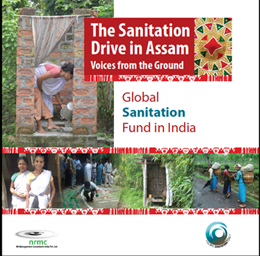 Triggering ChangeSummary
Triggering ChangeSummary
Results:
From 25,000 people having attained improved toilets in January 2012, one year later more than 520,000 people are using improved toilets.
A year ago 41 communities were declared open defecation free, and at mid-year that rose to 70 and now a cumulative total of 238 communities have been declared open defecation free. From 25,000 people living in ODF environments a year ago, that figure has quadrupled to more than 100,000 people living in ODF environments by January 2013.
The GSF supported program in India aims to be a catalyst to support and improve the implementation of the Government of India’s national program.
During 2012, the Government of India’s flagship sanitation program was reviewed and modified. As a result, the Total Sanitation Campaign was replaced by the new Nirmal Bharat Abhiyan (NBA) program. Due to the close linkage between the GSF supported program and the Government sanitation program, the GSF supported program has aligned its strategies with the NBA and supported local partners and institutions to understand and transition to the new government program.
Lessons Learned:
The Global Sanitation Fund’s program, with its focus on behavior change communication (BCC), offers a strong complement to the national subsidy driven program contained in the NBA.
Knowledge sharing on BCC by the Global Sanitation Fund is aiming to ensure that the available government funding on BCC is used to good effect. The GSF-supported program continues to develop strategies based on ground experience to achieve its behavior change led outcomes in an environment where subsidies prevail as a significant incentive.
For example, the people of Dokhala village in Kamrup district of Assam realized the importance of safe and sustainable sanitation when the village was triggered for collective action under the Global Sanitation Fund program. When the program began 80 percent of its population of 1,500 people defecated in the open.
On 28 May 2013 around 80 residents gathered at a local community shed to witness a triggering exercise conducted by Deputy Team Leader Vinay Tiwari.
Using low cost materials such as powder colors, chart paper and sketch pens, he conducted a participatory village activity.
The villagers drew a map on the ground, marking common community resources, roads and habitations. Areas of open defecation were pointed out as Vinay delivered the message of its impact on health, productivity and human dignity.
The residents of Dokhala responded positively to the exercise.
Local health worker Noni Devi felt the community mapping was a useful exercise to gather people. She also pointed out that continuous interpersonal communication is necessary to motivate people to construct toilets and promised to pursue the issue in the various Village Health and Sanitation Committee meetings in future.
The triggering was organized by the Executing Agency (EA) NR Management Consultants India Pvt. Ltd to familiarize the local Sub-grantees, the Centre for Environment Education (CEE) and North East Society for the Promotion of Youth & Masses (NESPYM), with community mobilization processes and encourage villagers to stop open defecation.
Following the initiation, field level implementation strategies in the two identified blocks of Sonitpur and Kamrup districts, namely Behali and Chayani Borduar, were presented by the EA.
As of 12 June 2013, the GSF in India had enabled over 520,000 people to have access to improved toilets in India.
GSF support in Assam was focused at achieving total coverage in two blocks. Based on the positive experience in these two blocks, investment has been allocated to either scale up to achieve full district coverage or expand to additional blocks.
In addition to Assam, the GSF program is running successfully in Jharkhand and Bihar states.
Toilet Talk - GSF India Spurring Action & Dialogue for Health & Hygiene
Publications
· Download Toilet talk final version (PDF) in English
New Delhi, India, 4 November 2013
Summary
The Global Sanitation Fund (GSF) in India has been raising awareness on the importance of sanitary hygiene practices and use of latrines in rural areas of Jharkhand, Bihar and Assam.
NRMC India, Executing Agency of GSF in India, recognizes the importance of public dialogue to raise awareness.
Responding to this need, WSSCC’s media partnership in the focus states is bringing key sanitation issues into the public domain and establishing its linkages to health, primary education and poverty reduction.
Toilet Talk “shares some of WSSCC’s work with the media and updates on program activities,” says WSSCC. “Articles by Indira Khurana and Swati Sahi in mainstream media are reproduced for wider sharing. The centerpiece of this newsletter is Anand Shekhar, Team Leader GSF India, in conversation with OneWorld South Asia on challenges of bringing people sustainable sanitation.”
· Download Toilet talk final version (PDF) in English
Reaching the Unreached: Listening to South Asian voices on Equity and Inclusion in WASH
[man with blind son, difficult walking into forest open defecation free environments elderly people, need for soap and water] From the video:” Improved sanitation in developing countries typically yields about $US$9 worth of economic benefit for every US$1 spent. This video draws on the perspectives of those whose voices are often not heard, such as the disabled, children, the elderly, the very poor and other excluded groups to highlight some of the complex factors concerning equitable access to sanitation and hygiene in the region. With the aid of specific examples from Nepal, India and Pakistan the video analyses barriers to access through the lens of socio-cultural, economic, political, geographic, environmental and administrative factors. In doing this, it points to the Colombo Declaration through which governments from the region have committed themselves to improving access to sanitation and hygiene.
The Water Supply and Sanitation Collaborative Council (WSSCC) commissioned this film as part of an associated five-country research study conducted by the Freshwater Action Network South Asia (FANSA). Published on October 23, 2013
Sanitation, Hygiene and Water for All
Post-2015 WASH Targets and Indicators - Facts and figures
As part of the Joint Monitoring Programme (JMP),WHO & UNICEF initiated a broad technical consultation to identify potential targets & indicators for WASH post-2015.
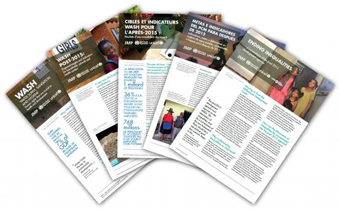
They are reflected in five fact sheets which you can download here or by clicking on the following titles with links to Fact Sheets.
Fact Sheets on Post-2015 WASH Targets and Indicators: Author: WSSCC, 7 November 2013
· Download Fact Sheet 4 - Post-2015 WASH targets and indicators (PDF) in English
More About “Community-Led Total Sanitation (CLTS)
from the CLTS Foundation:
“Community-Led Total Sanitation (CLTS) is an innovative approach for empowering communities to completely eliminate open defecation and to begin the journey towards a sustained improvement in public health.
“CLTS focuses on igniting a change in collective hygiene behavior, which is achieved through a process of community-wide action stimulated by facilitators from within or outside the community. It involves no hardware subsidy and does not prescribe latrine models.
“Dr. Kamal Kar pioneered CLTS in Bangladesh in 1999. Since then it has been implemented in more than 51 countries across the globe. It has been incorporated in the National Sanitation Strategy of at least 18 countries of which 14 are in Africa and the rest in Asia.
“The CLTS Foundation works through an international team of professionals, practitioners, researchers and policy experts to build capacity and influence policy for enhancing access to sanitation through CLTS.”
This article was published on the Horizon International Solutions Site on 28 March 2014. It is Article 3 of the series Realizing Water, Sanitation and Hygiene for All. The first article which focuses on the background of the problem, what it means for nearly half the people of the developing world who lack adequate water, sanitation and hygiene is available at www.solutions-site.org/node/1255 and the second, which is about NEWater in Singapore, is available at http://www.solutions-site.org/node/1302.
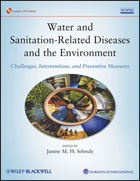 Book CoverThis article is presented as part of the Supplementary Material that accompanies the book Water and Sanitation Related Diseases and the Environment: Challenges, Interventions, and Preventive Measures, a Wiley-Blackwell publication in collaboration with Horizon International, written by 59 experts. Janine M. H. Selendy, Horizon International Founder, Chairman, President and Publisher, is Editor.
Book CoverThis article is presented as part of the Supplementary Material that accompanies the book Water and Sanitation Related Diseases and the Environment: Challenges, Interventions, and Preventive Measures, a Wiley-Blackwell publication in collaboration with Horizon International, written by 59 experts. Janine M. H. Selendy, Horizon International Founder, Chairman, President and Publisher, is Editor.
There are now more than 45 additional articles as part of the Supplementary Material published on the Horizon International Solutions Site.
The book’s 4 hours of multimedia DVDs are included with an abundance of multidisciplinary resources, covering diverse topics from anthropology to economics to global health are being distributed free of charge by the Global Development And Environment Institute (GDAE) at Tufts University.
These are being given to thousands of libraries, organizations, and institutions in 138 less-wealthy countries. They are valuable additions to resources for use in classrooms and communities, by researchers and government decision-makers.
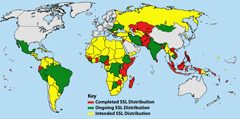 Map of Countries
Map of Countries
Map of countries
As of 28 March 2014, these resources have been made available in over 1,500 entities in 60 countries.
Read more: PDF Version is available at http://solutions-site.org/press/release1july2013.pdf
Search
Latest articles
Agriculture
- World Water Week: Healthy ecosystems essential to human health: from coronavirus to malnutrition Online session Wednesday 24 August 17:00-18:20
- World Water Week: Healthy ecosystems essential to human health: from coronavirus to malnutrition Online session Wednesday 24 August 17:00-18:20
Air Pollution
- "Water and Sanitation-Related Diseases and the Changing Environment: Challenges, Interventions, and Preventive Measures" Volume 2 Is Now Available
- Global Innovation Exchange Co-Created by Horizon International, USAID, Bill and Melinda Gates Foundation and Others
Biodiversity
- It is time for international mobilization against climate change
- World Water Week: Healthy ecosystems essential to human health: from coronavirus to malnutrition Online session Wednesday 24 August 17:00-18:20
Desertification
- World Water Week: Healthy ecosystems essential to human health: from coronavirus to malnutrition Online session Wednesday 24 August 17:00-18:20
- UN Food Systems Summit Receives Over 1,200 Ideas to Help Meet Sustainable Development Goals
Endangered Species
- Mangrove Action Project Collaborates to Restore and Preserve Mangrove Ecosystems
- Coral Research in Palau offers a “Glimmer of Hope”
Energy
- Global Innovation Exchange Co-Created by Horizon International, USAID, Bill and Melinda Gates Foundation and Others
- Wildlife Preservation in Southeast Nova Scotia
Exhibits
- Global Innovation Exchange Co-Created by Horizon International, USAID, Bill and Melinda Gates Foundation and Others
- Coral Reefs
Forests
- NASA Satellites Reveal Major Shifts in Global Freshwater Updated June 2020
- Global Innovation Exchange Co-Created by Horizon International, USAID, Bill and Melinda Gates Foundation and Others
Global Climate Change
- It is time for international mobilization against climate change
- It is time for international mobilization against climate change
Global Health
- World Water Week: Healthy ecosystems essential to human health: from coronavirus to malnutrition Online session Wednesday 24 August 17:00-18:20
- More than 400 schoolgirls, family and teachers rescued from Afghanistan by small coalition
Industry
- "Water and Sanitation-Related Diseases and the Changing Environment: Challenges, Interventions, and Preventive Measures" Volume 2 Is Now Available
- Global Innovation Exchange Co-Created by Horizon International, USAID, Bill and Melinda Gates Foundation and Others
Natural Disaster Relief
- STOP ATTACKS ON HEALTH CARE IN UKRAINE
- Global Innovation Exchange Co-Created by Horizon International, USAID, Bill and Melinda Gates Foundation and Others
News and Special Reports
- World Water Week: Healthy ecosystems essential to human health: from coronavirus to malnutrition Online session Wednesday 24 August 17:00-18:20
- STOP ATTACKS ON HEALTH CARE IN UKRAINE
Oceans, Coral Reefs
- World Water Week: Healthy ecosystems essential to human health: from coronavirus to malnutrition Online session Wednesday 24 August 17:00-18:20
- Mangrove Action Project Collaborates to Restore and Preserve Mangrove Ecosystems
Pollution
- Zakaria Ouedraogo of Burkina Faso Produces Film “Nzoue Fiyen: Water Not Drinkable”
- "Water and Sanitation-Related Diseases and the Changing Environment: Challenges, Interventions, and Preventive Measures" Volume 2 Is Now Available
Population
- "Water and Sanitation-Related Diseases and the Changing Environment: Challenges, Interventions, and Preventive Measures" Volume 2 Is Now Available
- "Water and Sanitation-Related Diseases and the Changing Environment: Challenges, Interventions, and Preventive Measures" Volume 2 Is Now Available
Public Health
- Honouring the visionary behind India’s sanitation revolution
- Honouring the visionary behind India’s sanitation revolution
Rivers
- World Water Week: Healthy ecosystems essential to human health: from coronavirus to malnutrition Online session Wednesday 24 August 17:00-18:20
- Mangrove Action Project Collaborates to Restore and Preserve Mangrove Ecosystems
Sanitation
- Honouring the visionary behind India’s sanitation revolution
- Honouring the visionary behind India’s sanitation revolution
Toxic Chemicals
- "Water and Sanitation-Related Diseases and the Changing Environment: Challenges, Interventions, and Preventive Measures" Volume 2 Is Now Available
- Actions to Prevent Polluted Drinking Water in the United States
Transportation
- "Water and Sanitation-Related Diseases and the Changing Environment: Challenges, Interventions, and Preventive Measures" Volume 2 Is Now Available
- Urbanization Provides Opportunities for Transition to a Green Economy, Says New Report
Waste Management
- Honouring the visionary behind India’s sanitation revolution
- Honouring the visionary behind India’s sanitation revolution
Water
- Honouring the visionary behind India’s sanitation revolution
- Honouring the visionary behind India’s sanitation revolution
Water and Sanitation
- Honouring the visionary behind India’s sanitation revolution
- Honouring the visionary behind India’s sanitation revolution

